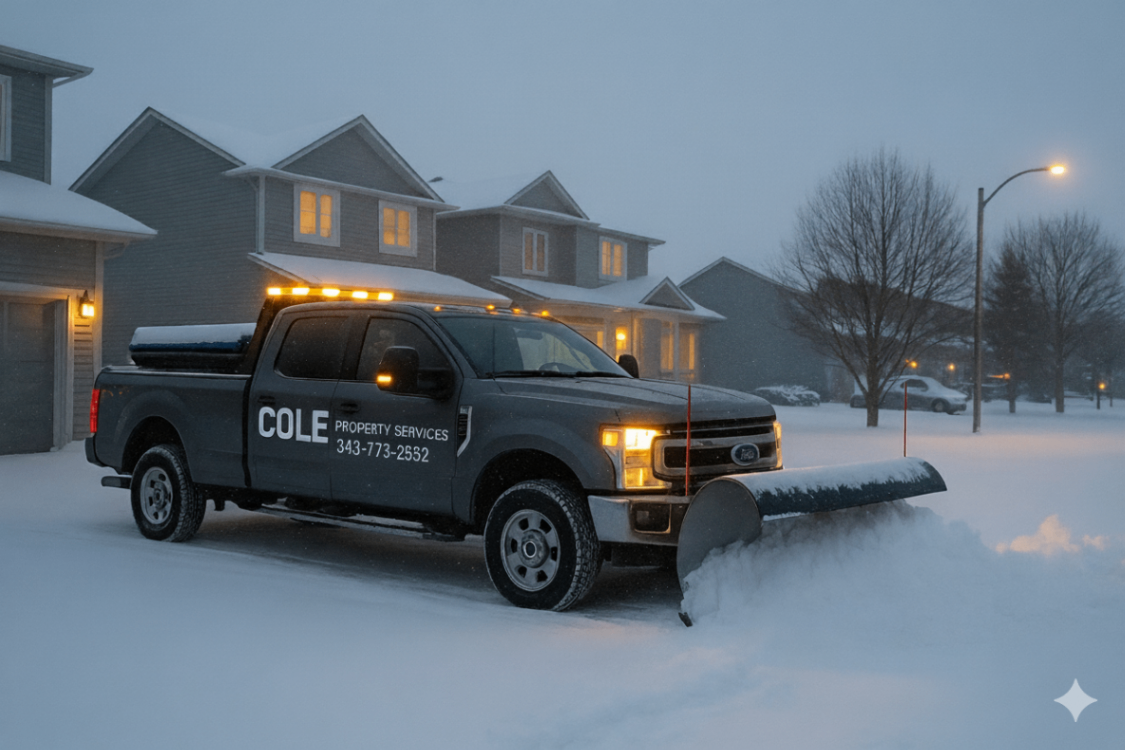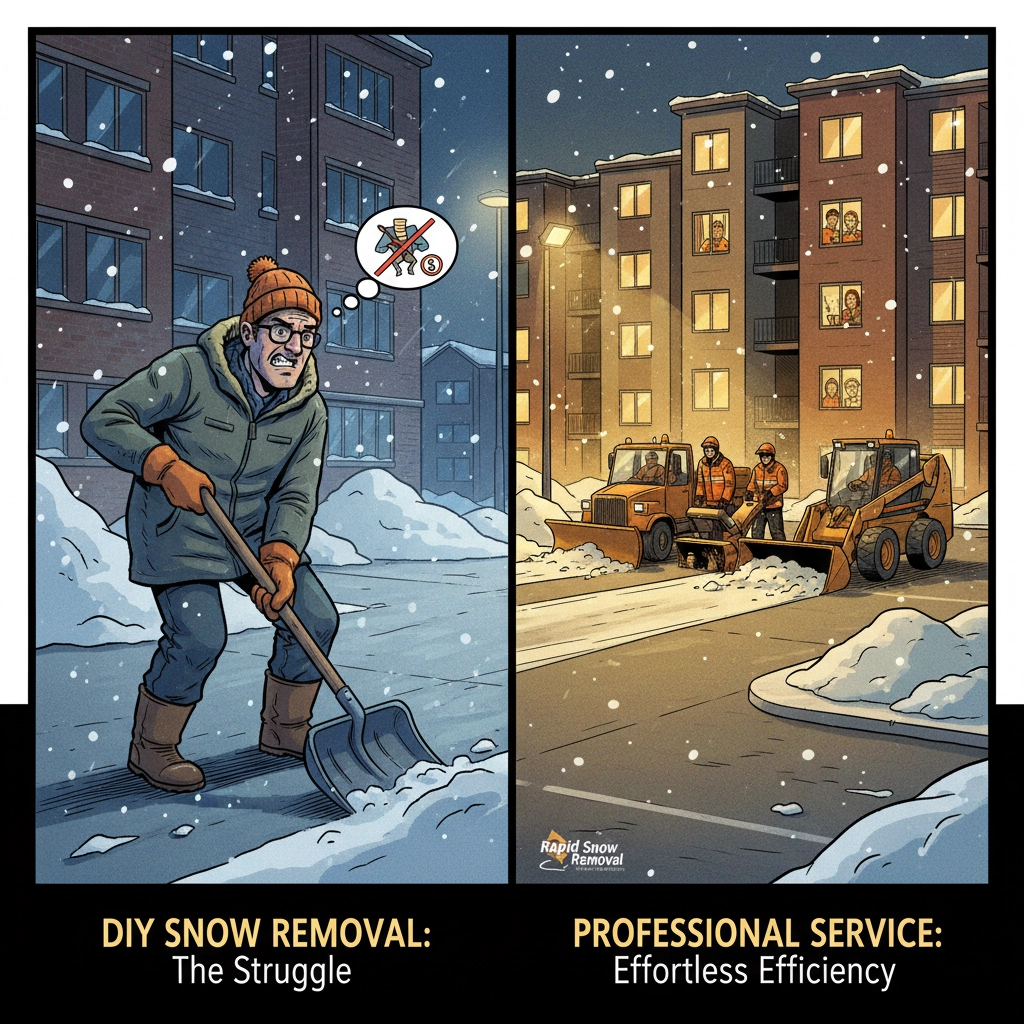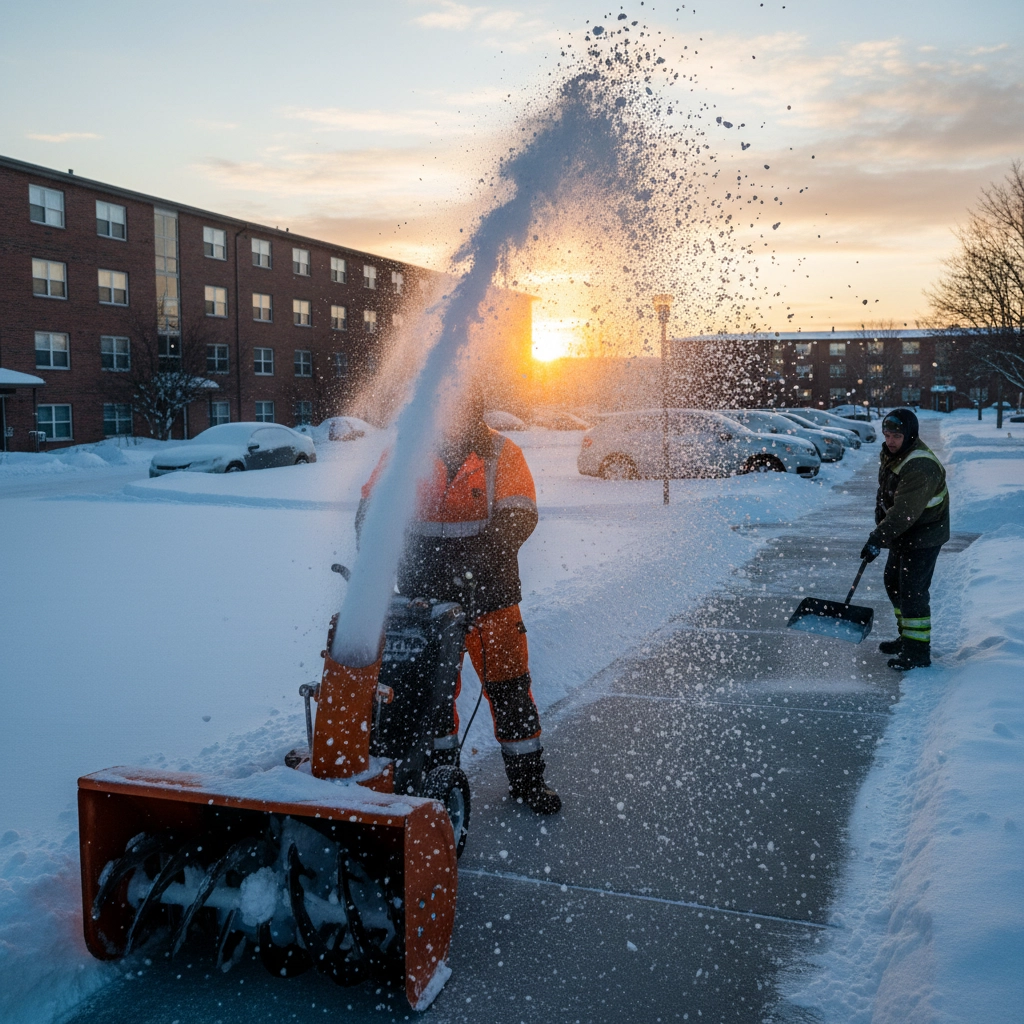Snow Removal at Rental Properties: What Landlords Need to Know for a Hassle-Free Winter
- luke7851
- Sep 28
- 5 min read
Winter's coming, and if you're a landlord, that means it's time to start thinking about snow removal. Trust me, this isn't something you want to leave until the first blizzard hits. Getting caught unprepared can cost you thousands in liability issues, tenant complaints, and emergency service fees.
Let's break down everything you need to know about snow removal at rental properties so you can sleep easy this winter.
Who's Actually Responsible for Snow Removal?
Here's the deal: in most places, you as the landlord are on the hook for snow removal. This is especially true for multi-unit buildings where tenants share common areas like walkways, parking lots, and driveways.
Don't think you can just slip some language into your lease agreement and pass the buck to your tenants either. Most jurisdictions won't let you transfer this responsibility, particularly when it comes to keeping exits clear and safe. Your tenants need to be able to get out of the building safely, and that's legally on you.
Single-family rentals are a bit different. If you're renting out a whole house, you might be able to make snow removal the tenant's responsibility – but check your local laws first. Some cities require property owners to clear sidewalks regardless of who lives there.
The bottom line? Don't assume anything. Check your local ordinances and make sure you understand exactly what's required.
Planning Your Snow Removal Strategy

Start planning before the snow flies. Seriously, waiting until December is way too late. Here's what you need to figure out:
Equipment and supplies: If you're handling snow removal yourself, you'll need the right tools. For smaller properties, basic shovels and ice melt might do the trick. But for larger complexes, you're looking at snow blowers, salt spreaders, and possibly even a plow truck.
Response timeline: Many cities require snow removal within 24 hours of snowfall. Some are even stricter – Pittsburgh, for example, gives you just 24 hours to clear sidewalks. Know your local requirements and build your plan around them.
Documentation: Keep a log of when snow falls, when you clear it, and what methods you use. This documentation can save your bacon if someone slips and tries to sue you later.
Different Properties, Different Approaches
Multi-unit buildings are where property maintenance done right really matters. You're responsible for:
All shared walkways and entrances
Parking lots and driveways
Steps and ramps
Fire exits (this one's critical for safety)
Mailbox areas
Single-family homes give you more flexibility, but don't just assume the tenant will handle everything. Even if they're responsible for the driveway and walkway, you might still need to handle the sidewalk if city ordinances require it.
Commercial properties with residential units above? You're definitely handling the snow removal for the entire property.
DIY vs. Professional Snow Removal Services

Let's be honest – unless you're managing just one or two small properties, professional snow removal is probably your best bet. Here's why:
Professional services offer:
Guaranteed response times (some offer 24/7 service)
Proper equipment for any size job
Insurance coverage
Experienced crews who know how to work safely and efficiently
DIY might work if:
You have just a few small properties
You live nearby and can respond quickly
You have the right equipment and storage space
You don't mind being on call during snowstorms

The math usually works out in favor of professional services when you factor in equipment costs, storage, maintenance, and your own time. Plus, if you're dealing with multiple properties, coordinating snow removal across all of them during a storm can be a nightmare.
Timing Is Everything
Don't wait for the snow to stop. Start clearing during the storm if it's safe to do so. This prevents snow from getting packed down and turning into ice, which is much harder (and more expensive) to deal with.
Priority areas:
Fire exits and emergency routes
Main walkways to entrances
Handicap accessible routes
Parking areas
Less critical walkways
Ice management is just as important as snow removal. Salt, sand, or ice melt should be applied to prevent slippery conditions. This is especially crucial in areas with temperature fluctuations that cause melting and refreezing.
Communication With Your Tenants

Keep your tenants in the loop about your snow removal policies. Include clear language in your lease agreements about who's responsible for what. Even if you're handling all the snow removal, let tenants know:
How quickly you'll respond to snowfall
Who to contact if areas aren't cleared properly
Any temporary parking restrictions during snow removal
Emergency procedures if exits become blocked
Good communication prevents a lot of headaches and angry tenant calls at 6 AM after a snowstorm.
What About Costs?
Snow removal costs vary wildly depending on your location, property size, and how much snow you typically get. Professional services might charge anywhere from $30-100 per visit for small properties, while larger complexes could see bills in the hundreds or thousands per storm.
Budget for the unexpected. Even if you live in an area that typically gets light snow, one major storm can blow your budget if you're not prepared. Having a relationship with a snow removal service before you need them can save money and guarantee availability.
Consider seasonal contracts if you're in a high-snow area. Many companies offer better rates if you sign up for the whole season rather than paying per storm.
Legal Protection and Risk Management
Here's something that keeps a lot of landlords up at night: liability. If someone slips and falls on your property because of uncleared snow or ice, you could be looking at a serious lawsuit.
Document everything:
When snow fell
When it was cleared
Methods and materials used
Any incidents or complaints
Insurance matters: Make sure your property insurance covers winter weather incidents, and if you hire a snow removal service, verify they carry liability insurance too.
Don't cut corners on safety. It's always cheaper to prevent an accident than to deal with the aftermath.
Making It Work for Your Portfolio
If you're managing multiple rental properties, organization is key. Create a system that tracks:
Which properties need service
Contact information for tenants at each property
Local requirements for each municipality (they can vary!)
Service provider contact information
Property maintenance done right means having systems in place before you need them. Winter weather doesn't wait for you to get organized.
Winter property maintenance doesn't have to be a source of stress. With the right planning, clear responsibilities, and reliable service providers, you can keep your tenants happy and your properties safe all season long.
Need help with snow removal or other winter property maintenance services? Get in touch with us to discuss how we can help keep your rental properties winter-ready and worry-free.




Comments